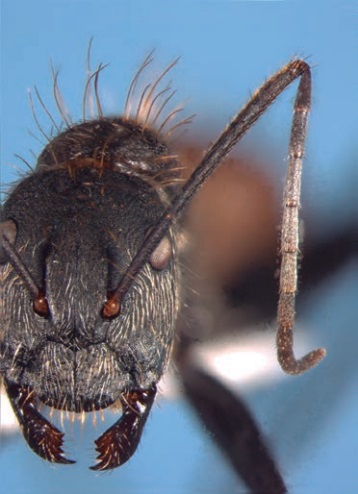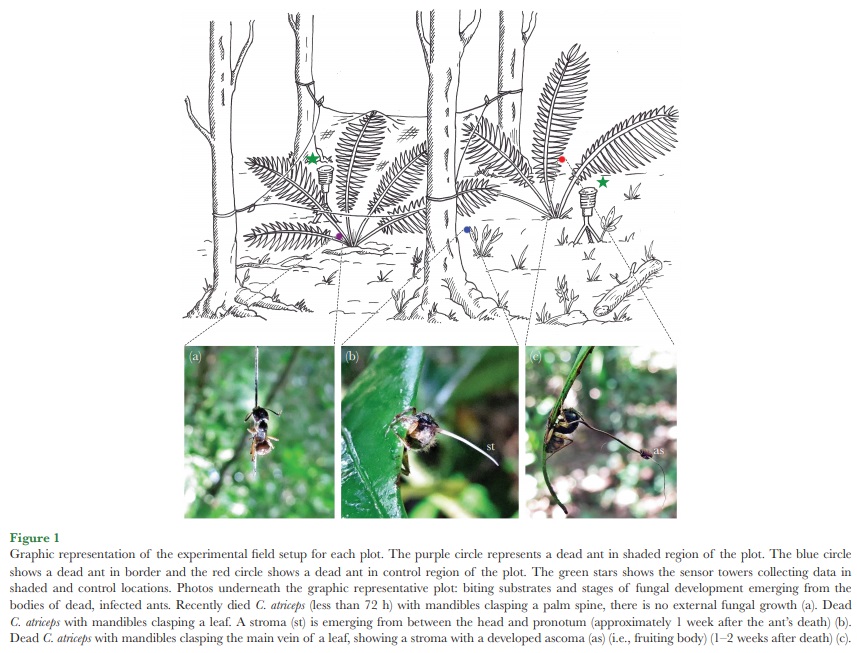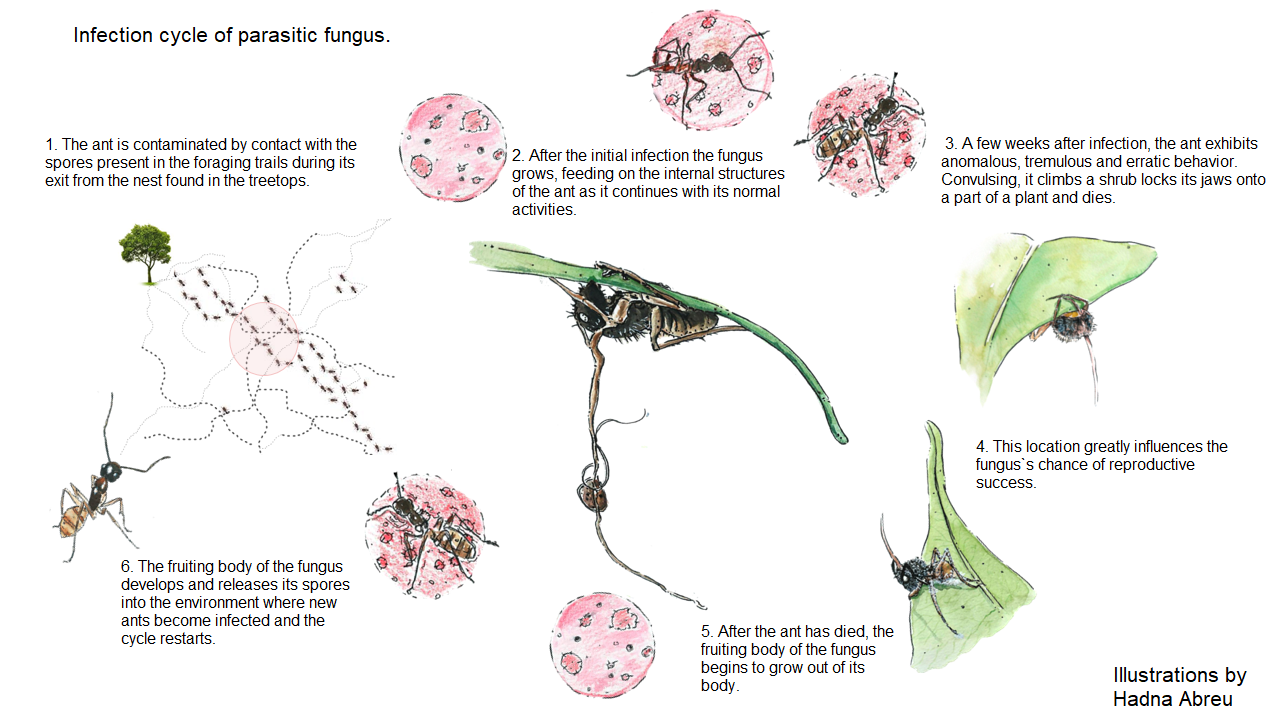 Português
Português English
English
Languages
Do zombie ant fungi turn their hosts into light seekers?
| Camponotus sp. | ||
|
From an article in: Behavioral Ecology (2019), 30(3), 609–616. doi:10.1093/beheco/ary198
"Do zombie ant fungi turn their hosts into light seekers?" by Fernando Sarti Andriolli, Noemia Kazue Ishikawa, Ruby Vargas-Isla, Tiara Sousa Cabral, Charissa de Bekker, and Fabricio Beggiato Baccaro.
Specialized parasites can modify host behavior to benefit transmission and reproduction. Such behavior is considered an extended phenotype of the parasite. The interactions between certain ant species and fungi of the genus Ophiocordyceps form an evident example.
Once infected by Ophiocordyceps camponoti-atricipis, Camponotus atriceps ants die, biting at specific sites where abiotic conditions are optimal for fungal development. For many species of free-living fungi, light is needed to induce growth of the reproductive stage. However, the role of light in Ophiocordyceps behavioral manipulation and fruiting body development is largely unknown. Here, we investigated the association between illuminance and the incidence of dead manipulated C. atriceps ants.
We identified ant graveyards in the field and experimentally changed the incident illumination for half of each graveyard using shading screens. Such screens resulted in a clear reduction of incident light, as well as slightly higher, more stable humidity levels. We measured the appearance of recently died, infected ants, the height at which they were found, and their fruiting body production. The presence of dead infected C. atriceps was strongly influenced by experimental light reduction. Shaded areas harbored fewer recently infected ants compared to naturally illuminated areas. In addition, in shaded areas, a smaller number of ants produced fruiting bodies and these ants also appeared to have climbed to higher elevations in comparison to control areas. Our findings indicate that light influences the place of the C. atriceps death, and fungal development by seemingly affecting fruiting body formation in O. camponoti-atricipis.
Read the complete article here. Click images to enlarge. A book about ants.




